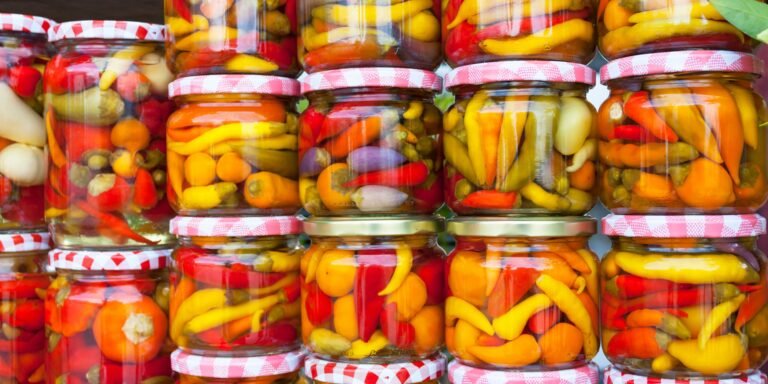Make Your Own Vegetable Oil In 9 Easy Steps
This post may contain affiliate links, full disclosure here.
Being self-sufficient can be a long process, but it is a goal that can be achieved if you avoid relying on companies and third parties.
One of the small things you should learn to help you move closer to your self-sufficiency objective is how to make your own vegetable oil. Not to mention that it will undoubtedly come in helpful in the event of an emergency.
This post is also for you if your objective isn’t to be self-sufficient, but rather to live a healthier lifestyle and make healthier choices. You can learn how to manufacture high-quality oils without using any chemicals or going through any refining procedures.
The oil you obtain will be completely natural and nutritious. Aside from the health benefits, you will acquire a new skill that is both cost-effective and time-saving because you can get your oil for half the price on the market.
See also: How To Store Quinoa Long-Term
Making Cooking Oil At Home
Yes, it is possible to make oil at home, and it is not a difficult process. To make a jar full of healthful and organic oil, you’ll only need a few components.
However, we would like to point you that it can be time-consuming. You’ll need to prepare for an upper-core exercise, but the end result will make you feel good about putting out the effort.
Apart from being simple, you have a huge selection of oilseeds to pick from. Manufacture coconut, pumpkin, hazelnut, and almond oil if you want to make oils for soap, cosmetics, or to flavor your cuisine.
Sunflower oil is probably your best pick if you’re looking for a low-cost oil that can be used for deep frying and other purposes.
Once you’ve mastered the extraction procedure, you may start amassing a collection of unusual oils that you can use in high-temperature cooking or as salad dressings uncooked.
Type Of Oil You Can Easily Make At Home
All types of oils are simple to manufacture, although cold-pressed oils are recommended.
When it comes to nuts, look for seeds or nuts that have a high oil content. Pumpkin seeds, sesame seeds, sunflower seeds, hazelnuts, peanuts, flax seeds, almonds, and walnuts are some of the easiest and best nuts to harvest a large amount of oil.
Here’s a quick comparison of yields per quart of some of the most popular seed oils:
- Sunflower: 5.3 pounds
- Peanuts: 4.6 pounds
- Walnuts: 2.9 pounds
- Pumpkin: 5.3 pounds
- Hazelnuts: 3.5 pounds
Sunflower and pumpkin seeds have a lower yield, but they are simple to grow and inexpensive to purchase, which helps to balance the extraction problem.
Oil Pressing: Hot vs. Cold
When you decide to produce your own oil, you must first decide on the type of oil you want to make.
Oil can be extracted using either a hot or cold pressing process. Cold pressing is the simplest and least time-consuming process that does not necessitate the use of electricity. Cold-pressed oils have a greater flavor and are healthier and purer than heated oils.
The catch is that not all seeds and fruits can be extracted using the cold-press process. Sunflower, canola, sesame, coconut, and olive oil seeds are excellent in producing oil by this method.
In commercial oil plants, cold press oils necessitate a slightly longer procedure and many pressing steps. Extra virgin oil is a word used frequently in the oil industry to describe a procedure in which the seeds are only pressed once and there are no subsequent pressings to enhance the quantity.
Hotpress oils, on the other hand, do not necessitate the use of heavy apparatus; you may produce the oil using your cooktop or oven. This sort of oil also produces a greater quantity of oils. These hotpressed oils are more resistant to high heat in the kitchen.
Making Sunflower Oil at Home: A Step-by-Step Guide
These are the measures to obtaining a plentiful harvest of pure, unadulterated sunflower oil.
Pay attention to the type of sunflower seed you choose; black sunflower oilseeds produce far more oil than standard sunflower seeds. You will need roughly 35-36 pounds of oilseeds to make 3 gallons of oil.
- Peeled sunflower seeds
- Hand crank machine
- Strainer
- Bottle
- Big bowl (for husks)
To extract the oil, you’ll need to invest in a manual hand crank machine like this. You have the option of using a manual device or an automated one at this stage.
The latter would be costly, and if you’re on a limited budget, we wouldn’t recommend it. Because of their demanding hardware and constructed quality, these manual machines are far less expensive and endure much longer.
In a large pot, clean out the dirt, residue, and any big small earthy surprises. Rinse the seeds under running water and dry them in the sun for 24 hours.
You can use a dehydrator to dry the seeds if you live in a region where there isn’t much sunshine. Continue tossing them around until they’re all dry.
Attach the tool to your workspace securely using the clamp provided by the manufacturer.
Warm up the hand crack by placing a heating lamp or candle underneath the machine and allowing it to heat for at least 10 minutes. To have a brighter and stronger flame, the most efficient method is to utilize kerosene or alcohol lamps.
An improvised funnel made out of a plastic water or milk container is required for most hand crank variants. Start putting your seeds in the funnel at the top after you have that or a wide-mouthed funnel.
Turn the crank as soon as the nuts begin to enter the machine. The seeds are hand-cranked and fed into the expeller as a result of this motion. Make sure you have a bottle underneath the gadget to catch any oil that leaks out.
A mason jar would be ideal because of its wide mouth, which would allow the oil to fall down into the bottle regardless of flow. This procedure produces a seed husk cake, which is then ejected. You may compost it or store it for a nutritious poultry feed.
After the oil has been extracted from your mason jar, leave the pot alone for 24 hours. There would be a few contaminants in the oil you extracted, but these would settle out overnight as the oil settled.
To get an extra filtered result, carefully sieve the oil without disturbing the residue. Place this oil in an airtight container and store it somewhere cool and dry.
It would be good to store it in a kitchen cabinet or pantry. As long as your oil is properly sealed, it can last for two years. If you notice a rotten odor after a few days, stop using it for cooking and start using it as a lubricant or lamp oil instead.
Some vegetable oils include sunflower, peanut, palm, olive, cottonseed, canola, and coconut.
These oils are typically used for heavy cooking rather than dressings and seasonings. You can also consider the following alternatives:
Avocado Oil
Avocado toast, believe it or not, may be used to make pure avocado oil. This oil is removed from the pulp, which is then burned to a high temperature, separating the oils in the process.
The result is a rich, creamy, buttery oil that will enhance any dish with only a few drops. Avocado oil has one of the highest smoke points of any oil, therefore it doesn’t burn quickly.
Avocado oil can be used for grilling, stir-frying, marinades, and salad dressings.
Olive oil continues to have the title of being the healthiest oil on the market. This nutritious oil is prepared from freshly plucked olives.
This oil is high in monounsaturated fatty acids, which can assist to minimise the risk of heart disease. Olive oil should not be used in desserts, but it adds a nuanced flavor to savory dishes, which we highly suggest.
Coconut Oil
The dried meat of coconuts is used to obtain this nutty oil. This can simply be used as a substitute for vegetable oil.
Because this oil has a high smoking point, it may be used for deep frying, but keep in mind that the recipe will taste particularly nutty, thus this oil is best used for deep frying. Because this oil solidifies at room temperature, you may need to thaw it before using it.
Sesame Oil
Sauces and stir-fried meals frequently contain this fragrant oil. Because of its powerful and unique flavors, sesame oil is not the best oil for deep frying or dishes with mild flavors.
Almond Oil
Although this sweet-tasting oil is commonly used in skincare and cosmetics, it is also incredibly healthy.
This oil can be used in salad dressings or cold applications. Because of its light and sweet aroma, this oil is also ideal for baking.
Making Your Own Cooking Oils At Home
Knowing how to extract oil is a fantastic ability to have in your back pocket for emergencies and expanding your skill set.
We guarantee that these extracted oils are healthier and more delicious than store-bought oils. If you’re not sure about the hand crank machine or want to give it a try before buying one, you can use a blender to do a cold press.
Combine the seeds and a few drops of water in a blender. After that, you press the seedy husk with your hand to obtain the oil. Before extracting oil, make sure you’re wearing gloves.
Why not give your body a workout and put your talents to the test now that you know how to extract the oil efficiently?








